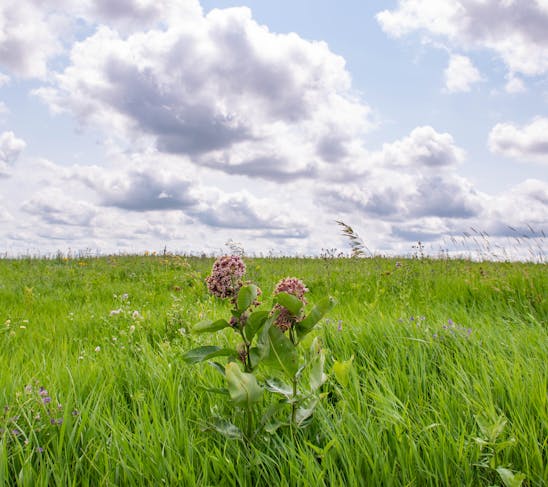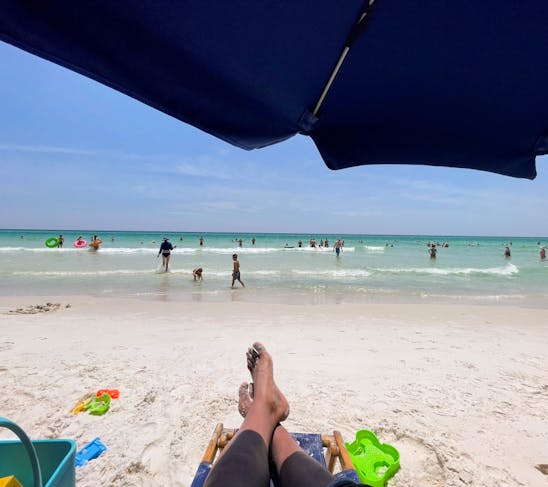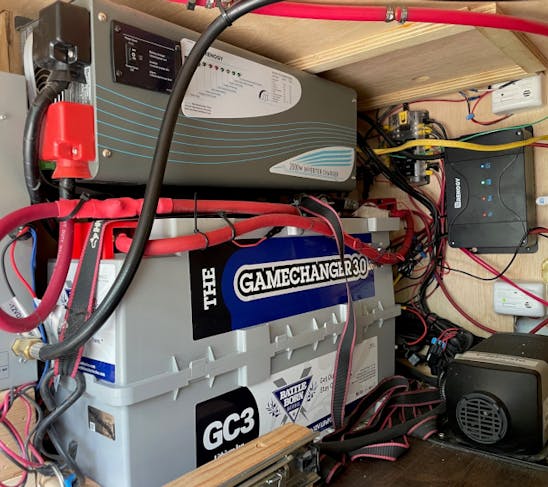It’s 12:35 p.m. on Monday, Sept. 13, 2021, and I’m sitting at my wife’s house in New Jersey playing catchup after taking some time off for our wedding last month. Yes, I’m officially a married man. My wife and I tied the knot at the same location—Big Sky, Montana—where I proposed the year before.
Back then, Montana’s Gallatin Valley and neighboring Yellowstone National Park were smoke free with blue skies and clear mountain views. Fast forward a year later and air quality alerts were in full effect from the wildfires burning inside the state and out west in places like California, Oregon and Idaho. The picturesque Gallatin and Madison Mountain Ranges were shrouded in a ghost-white haze as we made the one-hour drive south from Bozeman toward the idyllic 320 Guest Ranch located on the Gallatin River, the same river where the 1992 movie A River Runs Through It featuring a youthful Brad Pitt was filmed.
Haze forms when there are high levels of microscopic particulate matter—PM2.5—in the air. These are the same particles that can enter our bodies and cause negative health effects. I’d be lying if I said I wasn’t concerned. We had an outdoor wedding planned a few days later, and the amount of PM2.5 in the air had already topped 100 on the Air Quality Index that afternoon—an unhealthy level for anyone, especially guests with respiratory issues.

Smoke from forest fires can be particularly damaging because it releases high levels of natural and man-made volatile organic compounds (VOCs), which are a major contributor of PM2.5. Plants produce natural VOCs for a variety of reasons, such as attracting pollinators and insect defense. Interesting enough, if you drive through Yellowstone National Park, you’ll see countless areas of dead pine trees scattered about—the handiwork of the native bark beetle.
Bark beetle infestations are known to chemically alter the trees they are attacking, causing them to not only dry out, but also release up to a 20-fold increase in total VOC emission when compared to healthy trees. It’s a vicious cycle. Warmer temperatures allow bark beetle populations to thrive, which inevitably weakens the natural defenses of trees and makes them susceptible to more intense wildfires.
Take the mixed-conifer forests of California’s Sierra Nevada Mountains as an example. Bark beetles have devastated millions of trees in the area for the better part of a decade, so when the Dixie Fire began on July 14 of this year, it eventually grew into the single largest fire in the state’s history, burning more than 960,00 acres and contributing to hazy conditions as far east as New York and Vermont.

I remember standing on the summit of Mount Mansfield in Vermont back in July after hiking the highest point in the state. There was just enough visibility to see the ski town of Stowe down below. One of the caretakers from the Green Mountain Club, whose job it is to help protect the state’s endangered alpine ecosystem, told me I had picked a good day to hike. Apparently, the smoke from the Dixie Fire and others out west had recently blanketed Vermont’s Green Mountains with haze, and the views on that particular day were the clearest she had seen in weeks.
This past weekend, I traveled to New York City to visit the 9/11 Memorial 20 years after the twin towers collapsed on the morning of Sept. 11, 2001. In the days that following the attack, a toxic cloud of dust hung over Ground Zero. This “WTC Dust” was a dangerous combination of artificial VOCs, dioxins, asbestos, cement, mercury and lead that consisted mostly of coarse particles much larger in size compared to the PM2.5 typical of conventional dusts, including those caused by forest fires.
I’ll never forget the images of that day as bystanders below tried to outrun the dust clouds that enveloped Lower Manhattan. There was little visibility then, not only for those caught inside the plumes, but also for the rest of us who watched from afar, each of us left to wonder if the collective haze we were witnessing would ever end.

It was a clear night when I arrived at the Empty Sky Memorial in Jersey City, NJ, which was built to commemorate those 749 lives lost on 9/11 from the Garden State. The two walls of the memorial were designed to provide visitors with a direct view of the Manhattan skyline. When I stared across the Hudson River, the twin towers were noticeably absent, but so, too, was the smoke.
The same way the country came together after the terrorist attacks of 9/11, we must do the same again if we are to defeat a different kind of threat—an ecological one. Nature has been sending us smoke signals loud and clear in the form of extreme weather. If we want to avoid the smoke Mother Nature is unleashing on the planet, we need to stop using lack of visibility as an excuse to look the other way. If we all do our small part, maybe the smoke we have experienced in recent years will eventually clear up for good, the same day it did for my wedding in Montana, and we can all return to the blue skies of old.
Follow me on Instagram at @Joshua_Maven or @HonchotheVan, on Twitter @MaventheRaven or Facebook at Facebook/TheLastImperial.
Sources: Climate Change, Fires and Human Health, Air Monitoring Data for West Yellowstone, Smoke from Western Wildfires is Harming Air Quality on the East Coast, Massive Forest Die-Off in Sierra Nevada Caused by Multiyear Drought, Bark Beetles, Tree Chemistry and Wildfires, Bark Beetles May Impact Air Quality, Climate, Bark Beetles and Climate Change in the United States, The Network of Plants Volatile Organic Compounds, Anatomy of a Wildfire: How the Dixie Fire Became the Largest Blaze of a Devastating Summer, Health Effects of the World Trade Center (WTC) Dust
Postcards to Samuel
It's 8:00 p.m. on Wednesday, July 31, 2024, and I'm trying something a little different with this post. Instead of my usual blog format, I compiled a series of postcards that I wrote to my 10-month-old son, Samuel, during a two-week road trip I recently took to the Great Lakes. I plan to give him these postcards, along with others from future trips, when he's older in hopes that they will inspire him to chase his own dreams, whatever those might be.

False Summit
It’s 12:00 p.m. on Sunday, July 30, 2023, and I’m lounging at the beach enjoying the white sands and green waters of Florida’s Emerald Coast. Today is my 40th birthday and a relaxing getaway is exactly what I needed after a two-week road trip out west, where I hiked the highest peaks of Colorado and Arizona. The reasoning behind my latest excursion was simple: if I’m going to be “over the hill,” then I might as well be standing on top of a mountain.

Recharged
It’s 2:00 p.m. on Friday, Sept. 16, 2022, and I’m resting inside Honcho—my van—at the Taos Ski Valley Resort after successfully hiking Wheeler Peak, New Mexico’s highest point. I made the long drive west for a much-needed mental health getaway in nature. That, and it was a good excuse for me to test a new house battery I had installed the week before. Needless to say, my lungs and legs are physically exhausted after my 13,000-foot climb this morning, but the satisfaction that comes from summiting another mountain is just the feeling I was looking for.

